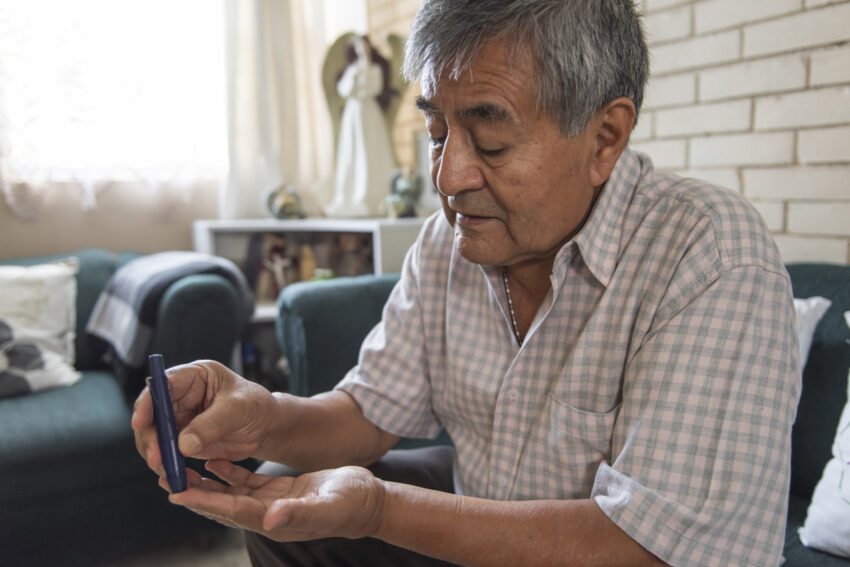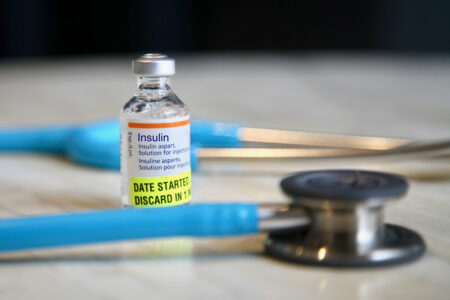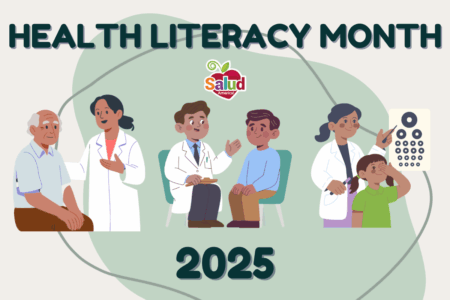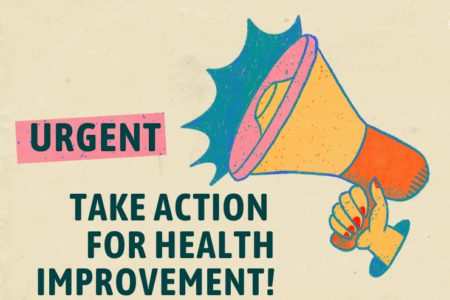
Share On Social!
In 2021, nearly 1 in 5 adults in the US with diabetes either skipped, delayed, or used less insulin than was needed to save money, according to a recent study in the Annals of Internal Medicine.
Not taking the proper amount of insulin is dangerous, and can lead to diabetic ketoacidosis, which can be fatal.
If six million Americans, including Latinos, need insulin to survive, why are they struggling to afford it?
The Cost of Living with Diabetes
Unfortunately, insulin has been unaffordable in the US for years.
The cost of insulin in the past decade alone has tripled, with minimal improvements or changes to the drug.
Those without health insurance are the most affected by insulin costs, such as Latinos, who remain the largest uninsured racial and ethnic group in the US.
The out-of-pocket price for a vial of insulin ranges from $50 to over $1,000, and a pack of pens ranges from $45 to over $600. Most patients need about two vials of insulin per month or one to two packs of insulin pens, physician and pharmacist Stephanie Redmond, PharmD, CDE, BC-ADM, told Verywell Health.
Those with insurance can expect to pay an average of over $35 a month per insulin product, which can still add up to unaffordable prices if multiple products are needed.
A recent study published in Health Affairs suggests that 14% of Americans spend a “catastrophic” level of income on insulin, meaning that after paying for other essentials, such as food and housing, they spend at least 40% of their remaining income on insulin.
The 26-year-old Type 1 diabetic was $300 short of the $1,300 he needed for insulin. He rationed the insulin he had left, hoping to make it to payday.
Unfortunately, he passed away three days before payday because he couldn’t get the insulin he needed.
In a Business Insider’s video, Alec’s mother, Nicole, can be seen supporting a group trip to Canada to purchase insulin at much lower costs.
Insulin has become so unaffordable that people are crossing borders to afford life-saving medication.
“I was shocked, I got a vial of insulin for $40, you know, and I would normally pay $380 for that vial,” Deb Souther, one of the group travelers, said in the video.
To make matters worse, Latinos and many Americans are struggling to make ends meet in the current inflated economy.
Some families are still struggling to recover from the COVID-19 pandemic, which caused many people to lose their jobs and employee health insurance.
With the added economic challenges of the last few years, insulin can be even harder to afford.
Why is Insulin So Expensive?
Given that millions of Americans depend on insulin to survive, and our nation’s obesity epidemic fuels diabetes diagnoses, a seemingly obvious question is, “Why is insulin so expensive?”
Price does vary by product, but one reason for insulin’s generally high costs is a process called “evergreening.”
Evergreening is when drug companies make small improvements to products to extend the life of patents, Dr. Kevin Riggs, a physician at the University of Alabama at Birmingham Heersink School of Medicine, told NBC News.
Patents keep generic versions of drugs from being produced, and it also allows drug makers with exclusive rights to their products to charge what they want.
Creating drugs, especially insulin, is also expensive.
Even when patents expire, it takes a large investment to create generic drugs and have them approved by regulators, such as the Food & Drug Administration.
“Insulin is a protein molecule, so it’s a lot more complicated than small molecules,” Eric Tichy, division chair of pharmacy supply solutions for the Mayo Clinic in Rochester, Minnesota, told NBC News. “So, there’s only a couple of companies that make it and if more companies enter the market, then that would sort of drop the prices.”
Latinos and Diabetes
Diabetes is a public health crisis in the Latino community.
Latinos have more than a 50% chance of developing type 2 diabetes compared to a 40% chance for the average American adult, according to the Centers for Disease Control and Prevention (CDC).
Diabetes complications also hit Latinos harder.
Latinos have higher rates of kidney failure caused by diabetes as well as diabetes-related vision loss and blindness, according to the CDC.
Latinos are also more likely to have prediabetes, a condition where blood sugar levels are higher than normal, but not high enough to be diagnosed with type 2 diabetes. Prediabetes comes with risks for other serious health problems, including heart disease and stroke, according to the CDC.
With higher risks and rates of diabetes among Latinos, there is a higher dependence on insulin in Latino communities.
“Latinos are disproportionately affected by diabetes and prediabetes and are more likely to face barriers to affordable insulin,” said Dr. Amelie Ramirez, director of Salud America! and its home base, the Institute for Health Promotion Research at UT Health San Antonio. “In addition to addressing the high cost of insulin, health policies must work toward addressing health inequities, including lack of access to health insurance, safe places to exercise, and nutritious food, that continue to put Latinos and other people of color at higher risk for diabetes.”
Will Insulin Become More Affordable?
Insulin will become more affordable for some next year.
President Joe Biden’s Inflation Reduction Act will cap the cost of insulin at $35 a month for patients on Medicare.
This cap is expected to help because patients usually need multiple insulin products a month. As noted earlier, prices for each product really add up.
However, this new law will not benefit the millions of Americans, including Latinos, who are uninsured or have private health insurance, the two groups who suffer from the highest rates of insulin rationing, according to a recent study.
The $35 cap was proposed for those with private insurance, but the cap was blocked by Republican Senators in August 2022.
A recent Kaiser Family Foundation study suggests capping insulin prices at $35 a month for those with private insurance would provide financial relief for 1 in 5 people in this group. These results make the cap denial sting even more.
Although discouraging, advocates and other politicians are not giving up on federal legislation that can make insulin more affordable.
In the meantime, at least 20 states have passed laws that cap copayments for insulin.
Minnesota has even passed a law to help patients secure affordable insulin in an emergency.
Other organizations, such as GetInsulin.org, are also helping diabetes patients get affordable emergency and long-term insulin. This resource is available in English and in Spanish.
How Can You Help?
As elected leaders work on more affordable insulin prices, you can help promote health where you live for Latinos and all people.
Select your county and get a Health Equity Report Card by Salud America! at UT Health San Antonio.
In your report card, you will see maps, data, and gauges to compare health equity issues, including healthcare access and income level, to the rest of your state and nation.
You can email your Health Equity Report Card to local leaders to stimulate community change. Use the data in your materials or share on social media to raise awareness.
Get your Health Equity Report Card!
Explore More:
HealthBy The Numbers
142
Percent
Expected rise in Latino cancer cases in coming years





… [Trackback]
[…] Read More: salud-america.org/dr-francisco-g-cigarroa-the-first-latino-chancellor-of-the-university-of-texas-system/ […]